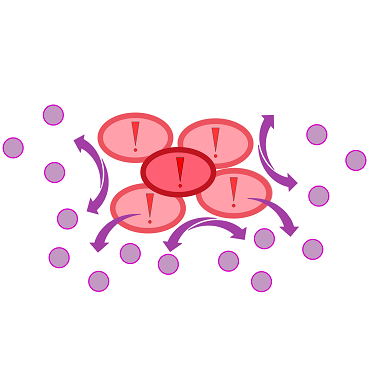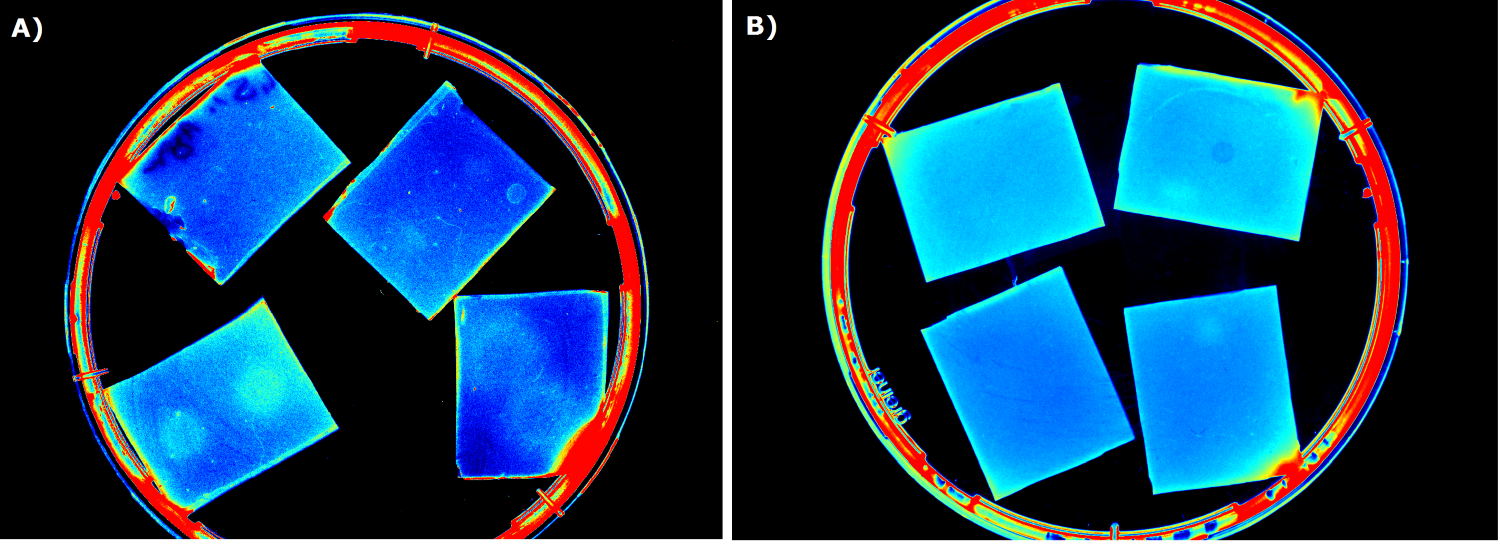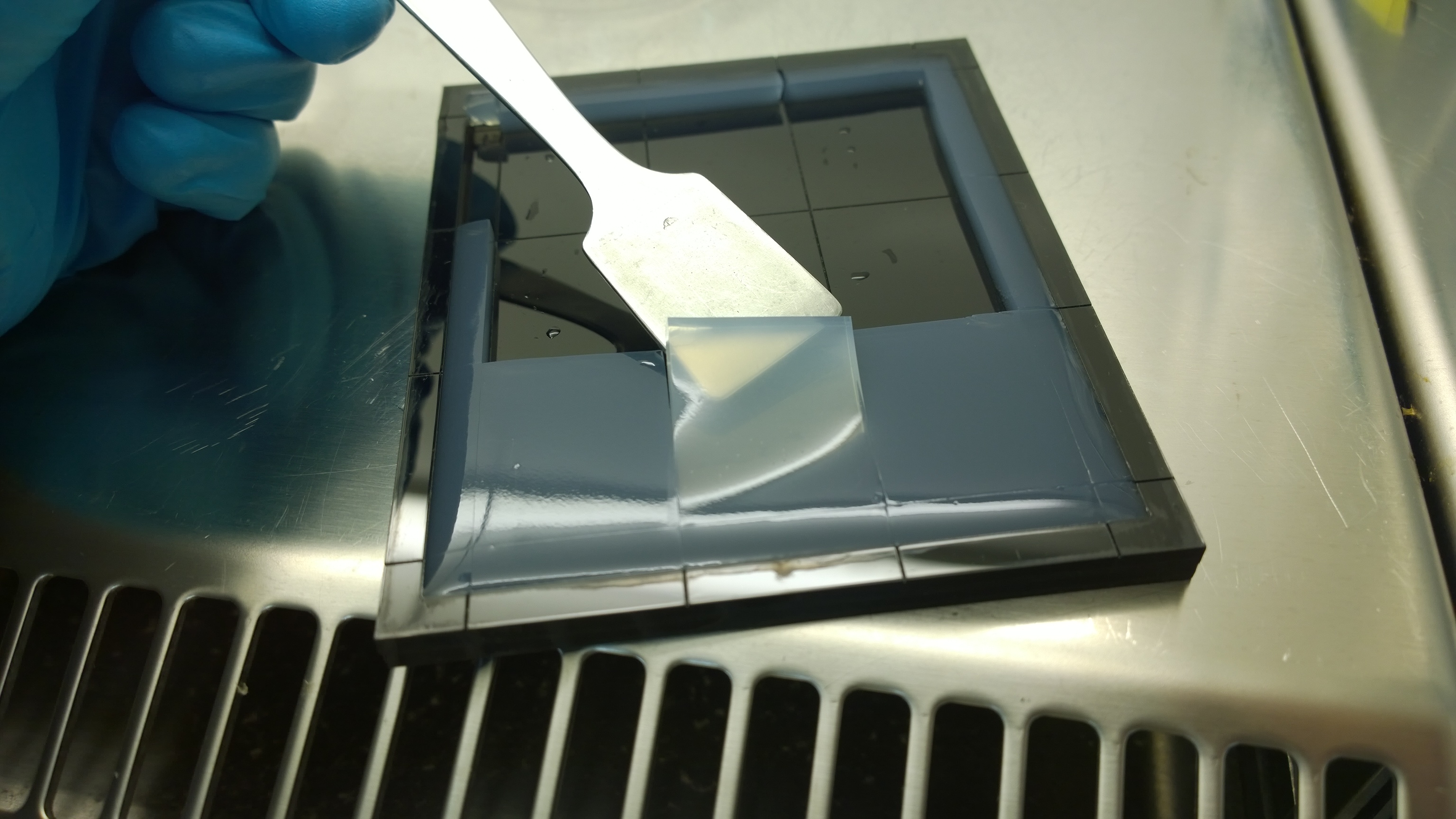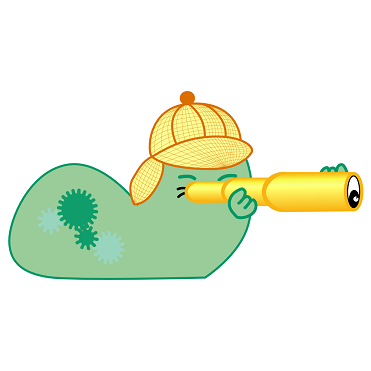Team:Aachen/Project/2D Biosensor
From 2014.igem.org
(→Detecting 3-oxo-C{{sub|12}} HSL with Sensor Chips) |
AZimmermann (Talk | contribs) |
||
| Line 103: | Line 103: | ||
<span class="anchor" id="biosensormolecularapproach"></span> | <span class="anchor" id="biosensormolecularapproach"></span> | ||
| - | For our biosensor, our team genetically modified ''E. coli'' cells to be able to elecit a '''fluorescent response to autoinducers''' produced by the pathogen ''Pseudomonas aeruginosa'' during quorum sensing. In the case of ''P. aeruginosa'', these autoinducers are N-3-oxo-dodecanoyl-L-homoserine lactone, or 3-oxo-C-12-HSL for short. The quorum sensing system of this pathogen contains the '''LasR activator''' which binds 3-oxo-C-12-HSL, and the '''LasI | + | For our biosensor, our team genetically modified ''E. coli'' cells to be able to elecit a '''fluorescent response to autoinducers''' produced by the pathogen ''Pseudomonas aeruginosa'' during quorum sensing. In the case of ''P. aeruginosa'', these autoinducers are N-3-oxo-dodecanoyl-L-homoserine lactone, or 3-oxo-C-12-HSL for short. The quorum sensing system of this pathogen contains the '''LasR activator''' which binds 3-oxo-C-12-HSL, and the '''LasI promotor''', which is activated by the LasR-HSL complex. Both LasR activator and LasI promotor are available as BioBricks [http://parts.igem.org/Part:BBa_C0179 C0179] and [http://parts.igem.org/Part:BBa_J64010 J64010]. |
| - | As a reporter gene, we use '''GFP'''. However, expression of GFP is not simply controlled through the LasI | + | As a reporter gene, we use '''GFP'''. However, expression of GFP is not simply controlled through the LasI promotor activity in our approach. Instead, our sensor cells contain genes for a constitutively expressed fusion protein consisting of GFP and a dark quencher, and an '''HSL-inducible protease'''. We use the REACh protein as dark quencher for GFP and the TEV protease to cleave the complex; [https://2014.igem.org/Team:Aachen/Project/FRET_Reporter here] you can read more about the REACh construct and the TEV protease. |
{{Team:Aachen/Figure|align=center|Aachen_REACh_approach.png|title=Our novel biosensor approach|subtitle=Expression of the TEV protease is induced by HSL. The protease cleaves the GFP-REACh fusion protein to elecit a fluorescence response.|width=500px}} | {{Team:Aachen/Figure|align=center|Aachen_REACh_approach.png|title=Our novel biosensor approach|subtitle=Expression of the TEV protease is induced by HSL. The protease cleaves the GFP-REACh fusion protein to elecit a fluorescence response.|width=500px}} | ||
| Line 164: | Line 164: | ||
To establish a prove of principle for our sensor chip design we used our construct [http://parts.igem.org/Part:BBa_K1319042 K1319042], which incorporates an IPTG inducible iLOV. ''E. coli'' cells containing the latter construct were introduced into sensor chips and fluorescence was measured every 15 minutes subsequently to induction with 2 µl 100 mM IPTG (Testing K1319042 in our sensor chips, displayed on the left). | To establish a prove of principle for our sensor chip design we used our construct [http://parts.igem.org/Part:BBa_K1319042 K1319042], which incorporates an IPTG inducible iLOV. ''E. coli'' cells containing the latter construct were introduced into sensor chips and fluorescence was measured every 15 minutes subsequently to induction with 2 µl 100 mM IPTG (Testing K1319042 in our sensor chips, displayed on the left). | ||
| - | We observed a distinct difference in fluorescence between the non-induced chip (top) and the induced chip (bottom). The middle of the bottom chip started to exhibit a clear and visible fluorescence and the fluorescence increased over time and spread outward. The top chip, however, also showed increase in the measured fluorescence over time which was primarily due to a leaky | + | We observed a distinct difference in fluorescence between the non-induced chip (top) and the induced chip (bottom). The middle of the bottom chip started to exhibit a clear and visible fluorescence and the fluorescence increased over time and spread outward. The top chip, however, also showed increase in the measured fluorescence over time which was primarily due to a leaky promotor and background fluorescence. |
=== Detecting 3-oxo-C{{sub|12}} HSL with Sensor Chips === | === Detecting 3-oxo-C{{sub|12}} HSL with Sensor Chips === | ||
Revision as of 23:19, 17 October 2014
|
|
|
|
|
|
 "
"












